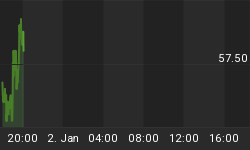It didn't take long for the press to hop on the "pressure grows on Fed to act" train following the weak employment data on Friday morning. From Reuters:
Expectations rose that the Federal Reserve would have to resort to more monetary easing to revive U.S. growth. But that did not stop the dollar from surging amid the flight from risk. The Labor Department said U.S. nonfarm payrolls expanded by just 80,000 jobs in June, falling short of forecasts. A Reuters poll showed the market expected 90,000 additional jobs. The data raised pressure on the Fed to launch a third round of quantitative easing. The first two rounds involved large-scale Treasuries buying, aimed at lowering long-term interest rates. "After this, we can expect some Fed action at their next meeting, said Tim Ghriskey, chief investment officer of Solaris Group in Bedford Hills, New York.
Since quantitative easing (QE) involves buying bonds with newly printed U.S. dollars, a Fed announcement of QE3 later this month would put downward pressure on the U.S. dollar and put some wind at the euro's back.
From a technical perspective, Friday's run for the euro exits was accompanied by short-term bullish divergences. A positive or bullish divergence occurs when price makes a lower low and an indicator makes a higher low. The divergences can be seen by comparing the slopes of lines A, B, and C in the chart below.

A weekly MACD divergence can be one of the best signals in technical analysis. The chart of the euro has one heading into the weekend.

Divergences can appear on charts early in a bottoming process, meaning even if the euro rallies, it may experience more downside pressure in the short-term. The divergences above are "pay attention" signals rather than buy signals. A bullish divergence in the euro increases the odds of another leg higher in stocks.
















